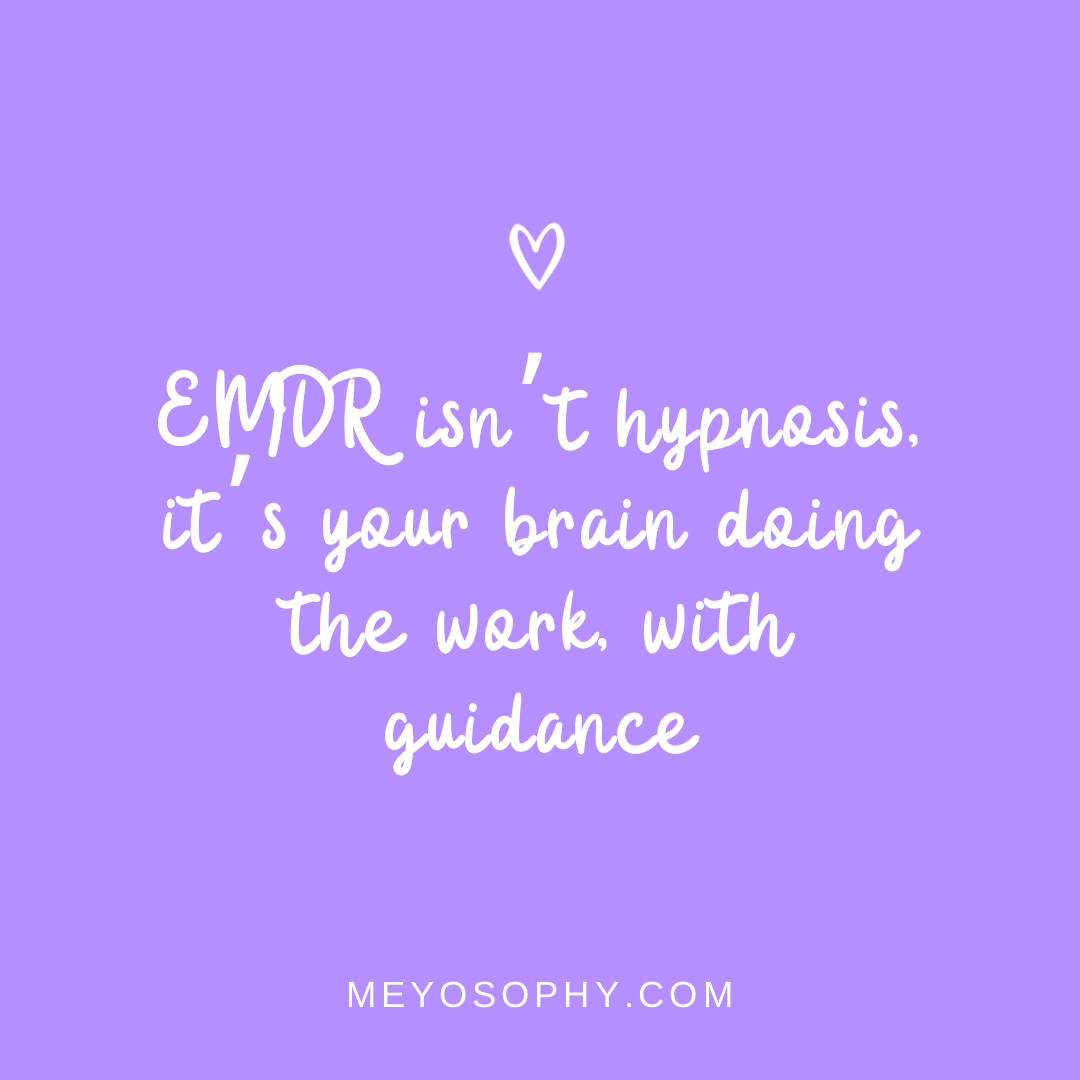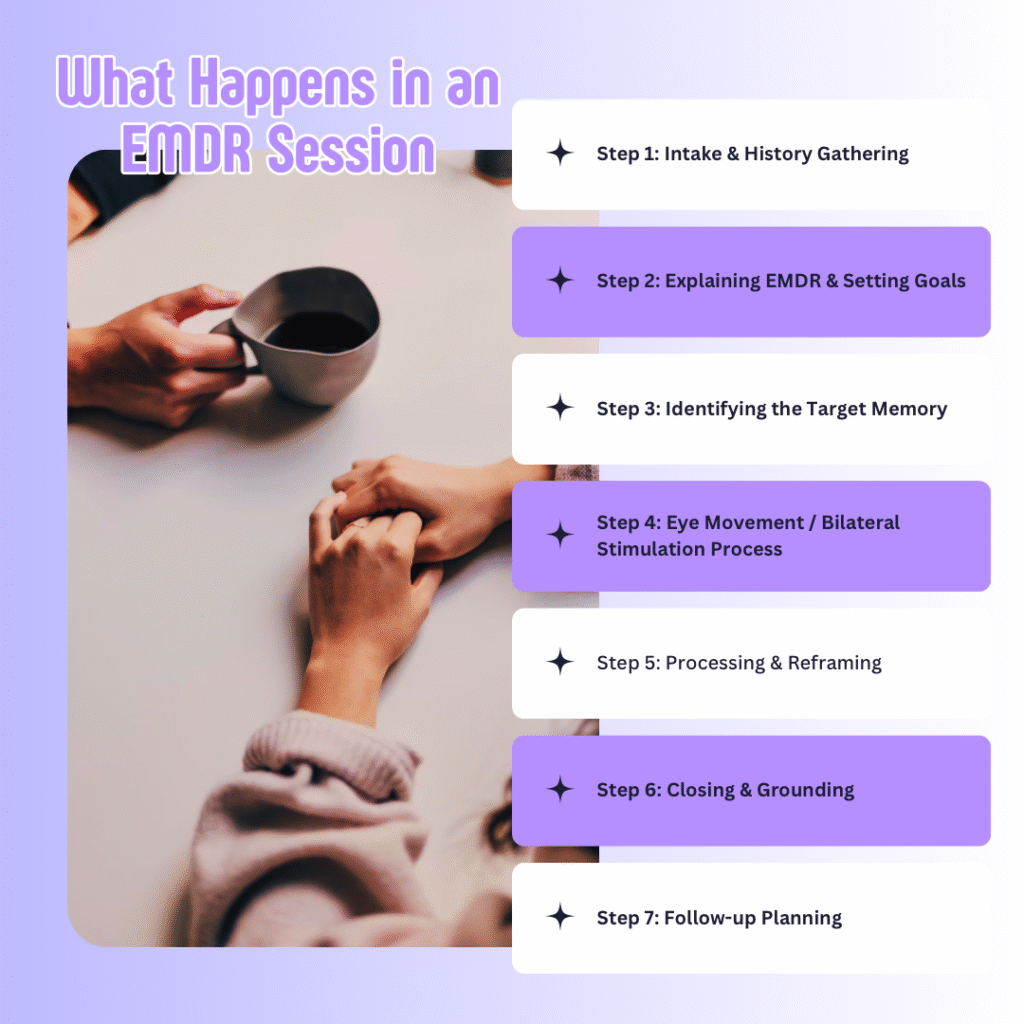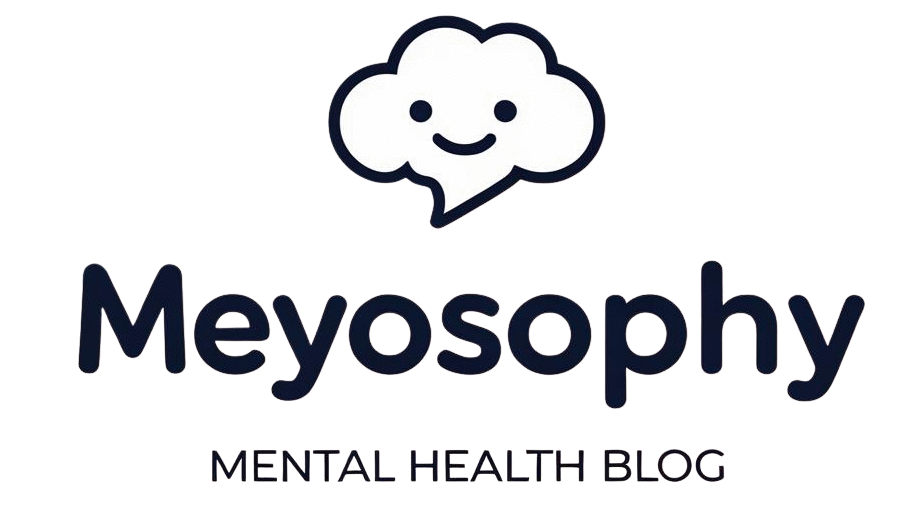Disclaimer: I’m not a mental health professional, everything here is shared from research and personal experience. If you’re feeling overwhelmed or need support, please consider talking to a qualified professional. You’re not alone. If you’re in the U.S., you can call or text 988 anytime. For help in other countries, visit https://findahelpline.com.
Eye Movement Desensitization and Reprocessing (EMDR) has become one of the most talked-about therapies for trauma and anxiety. But if you’ve never had an EMDR session before, you might feel a mix of curiosity and nerves. What exactly happens in that first appointment? How does it work? And will you have to relive painful memories?
In this article, we’ll walk you through what EMDR is, how it works and what you can expect during your first session.
What Is EMDR Therapy?
EMDR is a form of psychotherapy developed in the late 1980s by Francine Shapiro. It’s designed to help people process traumatic or distressing memories that continue to cause emotional pain, anxiety, or other symptoms long after the event.
Unlike traditional talk therapy, EMDR uses bilateral stimulation: often in the form of guided eye movements, tapping, or sounds. This happens while you recall aspects of a traumatic memory. This process is thought to help “reprocess” the memory, reducing its emotional charge and allowing your brain to store it in a healthier way[^1].

How Does EMDR Work?
The theory behind EMDR is that traumatic memories get “stuck” in the brain in an unprocessed form. Normally, your brain files memories away like documents in a cabinet. But after trauma, those memories can remain vivid, raw, and easily triggered.
Bilateral stimulation, such as moving your eyes back and forth while focusing on the memory, is believed to help activate both hemispheres of the brain. This can make information processing easier, allowing the brain to integrate the memory without the same emotional intensity[^2].
Before Your First Session
Before EMDR begins, your therapist will conduct a thorough assessment. This usually involves:
- Reviewing your history and current symptoms
- Discussing your goals for therapy
- Checking whether EMDR is the right fit for you
- Teaching you grounding techniques to help you manage emotional distress during and between sessions
Your first session might not involve full trauma processing right away. It’s often more about preparation and making sure you feel safe.

What Happens in Your First EMDR Session
While the exact structure can vary, here’s a general outline:
- Establishing Safety and Trust
Your therapist will explain the EMDR process, answer questions, and ensure you’re comfortable. This trust-building phase is essential. - Identifying Target Memories
Together, you’ll choose a memory (or memories) to focus on. You’ll discuss the image, thoughts, feelings, and body sensations connected to it.

3. Setting a “Safe Place”
Many EMDR therapists guide clients to visualize a calming, safe mental space. This helps you return to a grounded state if emotions become overwhelming.
4. Bilateral Stimulation Practice
Before tackling intense memories, your therapist may have you practice following their hand, light bar, or alternating sounds. This helps you get used to the process.
5. Processing (Optional in Session One)
If you and your therapist decide you’re ready, you might start processing a memory in your first session. You’ll briefly bring up the memory while engaging in bilateral stimulation. After each short set, your therapist will check in, and you’ll notice how your thoughts and feelings shift.
6. Closing and Grounding
At the end of the session, your therapist will ensure you feel calm and stable before you leave. You may be given coping tools or relaxation techniques to use between sessions.
How You Might Feel After
It’s normal to feel emotionally lighter, neutral, or even temporarily more sensitive after EMDR. Some people notice new insights or dreams in the days that follow. Drinking water, journaling, and practicing self-care can help.
If distressing feelings come up between sessions, use the grounding tools your therapist gave you and let them know at your next appointment. If you feel things get to heavy, you can always reach out to your therapist or another licenced professional.
Is EMDR Right for You?
EMDR has strong evidence for treating PTSD, but research also shows benefits for anxiety disorders, depression, phobias, and grief[^3]. If you have unresolved trauma or disturbing life experiences, EMDR may be worth exploring with a qualified therapist.
However there are contra indications for EMDR such as a history or active psychosis. Other treatment would fit better in that circomstance.

Key Takeaways
- EMDR helps the brain reprocess stuck memories through bilateral stimulation.
- Your first session focuses on safety, trust and preparation.
- Processing a memory may or may not happen in session one.
- You’ll leave with grounding tools to manage emotions between sessions.
Final Thoughts: Your Healing Begins with Understanding
EMDR might look different than other therapies, but it is really healing for many. Your first session is less about going deep into memory right away and more about creating safety, clarity and control. With each step, you’ll build trust in yourself and your ability to integrate hard past experiences into your life story more gently.
You’re showing up for your healing and that’s really powerful.
Sources:
[^1]: Shapiro, F. (2018). Eye Movement Desensitization and Reprocessing (EMDR) Therapy, Third Edition. The Guilford Press.
[^2]: American Psychological Association. (2017). Clinical Practice Guideline for the Treatment of PTSD.
[^3]: National Center for PTSD. (2020). EMDR for PTSD. U.S. Department of Veterans Affairs.
FAQ
You might recall the memory, but you control the pace. EMDR doesn’t aim to retraumatize, you remain grounded throughout. Your therapist will intervene if you get to overwhelmed by the memory.
Yes, when done with a trained therapist, EMDR is safe and evidence based. You’ll have tools to stay present and calm. If EMDR isn’t right for you, your therapist will let you know (beforehand).
Typically 60-90 minutes are spent to preparation, processing and closure in each session.
Absolutely. It’s shown benefits for anxiety, phobias, depression, grief, perfectionism and more.
Some people notice relief after just a few sessions; others may work through deeper trauma over time. EMDR tends to be shorter term compared to traditional talk therapy.

